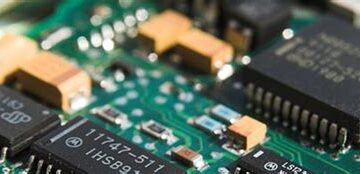Introduction to UCIe and Chiplet Standardization
In a groundbreaking move, leading semiconductor companies have joined forces to establish the Universal Chiplet Interconnect Express (UCIe), a consortium aimed at standardizing the chiplet ecosystem. This collaboration brings together industry giants with the goal of creating a unified and interoperable chiplet interconnect standard, enabling a new era of innovation and efficiency in semiconductor design and manufacturing.
What are Chiplets?
Chiplets are small, modular integrated circuits that can be combined to create larger, more complex systems on a chip (SoC). By breaking down monolithic chip designs into smaller, reusable components, chiplets offer several advantages:
- Increased design flexibility
- Reduced development costs
- Improved yield and reliability
- Faster time-to-market
The Need for Standardization
Despite the benefits of chiplet-based designs, the lack of a standardized interconnect has hindered widespread adoption. Each company has developed its own proprietary interconnect technologies, leading to compatibility issues and limiting the potential for collaboration. The formation of UCIe aims to address this challenge by establishing a common standard that promotes interoperability and facilitates the creation of a thriving chiplet ecosystem.
UCIe Consortium Members and Their Roles
The UCIe consortium brings together a diverse group of industry leaders, each contributing their expertise and resources to drive the standardization effort. Some of the key members include:
- Intel Corporation
- TSMC
- Samsung Electronics
- AMD
- Arm
- Qualcomm
- Microsoft
These companies represent a cross-section of the semiconductor industry, spanning chip designers, foundries, and technology providers. By working together, they aim to create a robust and inclusive standard that benefits the entire ecosystem.
Governance and Working Groups
To ensure effective collaboration and progress, the UCIe consortium has established a governance structure and working groups focused on specific aspects of the standardization process. These working groups include:
- Technical Specifications Working Group
- Compliance and Interoperability Working Group
- Marketing and Ecosystem Development Working Group
Each working group is responsible for defining and implementing the necessary specifications, testing procedures, and promotional activities to support the adoption of the UCIe standard.
Benefits of UCIe Standardization
The standardization of the chiplet ecosystem through UCIe offers numerous benefits to the semiconductor industry and its customers:
1. Increased Innovation
By lowering the barriers to entry and enabling companies to focus on their core competencies, UCIe will foster innovation and encourage the development of new chiplet-based solutions. This will lead to a wider range of products and applications, driving growth and competitiveness in the industry.
2. Cost Reduction
Standardization will reduce the costs associated with developing and integrating chiplets from multiple vendors. Companies will be able to leverage a common interconnect technology, eliminating the need for custom solutions and reducing design complexity.
3. Faster Time-to-Market
With a standardized interconnect, companies can accelerate the development and deployment of chiplet-based products. This will enable them to respond more quickly to market demands and stay ahead of the competition.
4. Improved Reliability and Performance
UCIe standardization will ensure that chiplets from different vendors can be seamlessly integrated, resulting in more reliable and high-performing systems. The consortium will define rigorous testing and compliance procedures to guarantee interoperability and quality.
5. Ecosystem Collaboration
The formation of UCIe will foster collaboration among industry players, enabling them to share knowledge, resources, and best practices. This collaborative approach will accelerate the adoption of chiplet technology and create new opportunities for partnerships and joint ventures.

Technical Details of UCIe Standard
The UCIe standard will encompass various technical aspects to ensure a comprehensive and robust interconnect solution. Some of the key areas addressed by the standard include:
Physical Layer Specifications
The physical layer specifications will define the electrical and mechanical characteristics of the UCIe interconnect. This includes signal integrity, power delivery, and packaging requirements to ensure reliable communication between chiplets.
Protocol Stack
UCIe will specify a common protocol stack that enables seamless communication between chiplets from different vendors. The protocol stack will include:
- Transaction Layer
- Data Link Layer
- Physical Layer
By defining a standard protocol stack, UCIe will ensure that chiplets can exchange data efficiently and reliably, regardless of their origin or function.
Chiplet Form Factors
The consortium will define standard chiplet form factors to promote compatibility and ease of integration. These form factors will specify the physical dimensions, pin assignments, and thermal requirements for chiplets, making it easier for designers to create modular and scalable systems.
Compliance and Interoperability Testing
To ensure that chiplets adhering to the UCIe standard are truly interoperable, the consortium will establish a comprehensive compliance and interoperability testing program. This program will include:
- Conformance testing to verify that chiplets meet the UCIe specifications
- Interoperability testing to validate that chiplets from different vendors can work together seamlessly
- Certification process to provide assurance to customers and ecosystem partners
By implementing a rigorous testing and certification program, UCIe will build confidence in the standard and accelerate its adoption.
Roadmap and Future Developments
The UCIe consortium has outlined a roadmap for the development and deployment of the standard. The key milestones include:
- Release of UCIe 1.0 specification (Q4 2022)
- Establishment of compliance and interoperability testing program (Q1 2023)
- First UCIe-compliant products on the market (Q2 2023)
- Expansion of UCIe ecosystem and adoption (2023-2024)
As the standard evolves, the consortium will continue to refine and update the specifications based on industry feedback and technological advancements. Future developments may include:
- Support for advanced packaging technologies
- Enhancements to power efficiency and thermal management
- Exploration of new use cases and applications
By staying at the forefront of chiplet technology, UCIe will enable the semiconductor industry to innovate and grow, driving the next generation of computing and communications solutions.
Conclusion
The formation of the Universal Chiplet Interconnect Express (UCIe) consortium marks a significant milestone in the semiconductor industry’s journey towards a standardized chiplet ecosystem. By bringing together leading companies and establishing a common interconnect standard, UCIe will unlock the full potential of chiplet technology, enabling increased innovation, cost reduction, and faster time-to-market.
As the consortium works towards the release of the UCIe 1.0 specification and the establishment of a robust compliance and interoperability testing program, the industry can look forward to a new era of collaboration and growth. The adoption of UCIe will not only benefit the semiconductor companies but also the end-users, who will have access to more powerful, efficient, and cost-effective solutions.
With a clear roadmap and a commitment to ongoing development, UCIe is poised to revolutionize the way we design and manufacture semiconductor devices. As the chiplet ecosystem evolves, the possibilities for innovation and advancement are truly exciting, and UCIe will be at the forefront of this transformation.
Frequently Asked Questions (FAQ)
1. What is UCIe, and why is it important?
UCIe, or Universal Chiplet Interconnect Express, is a consortium formed by leading semiconductor companies to standardize the chiplet ecosystem. It is important because it aims to create a unified and interoperable interconnect standard, enabling increased innovation, cost reduction, and faster time-to-market for chiplet-based products.
2. Who are the members of the UCIe consortium?
The UCIe consortium includes a diverse group of industry leaders, such as Intel Corporation, TSMC, Samsung Electronics, AMD, Arm, Qualcomm, Google, and Microsoft. These companies represent chip designers, foundries, and technology providers, working together to drive the standardization effort.
3. How will UCIe benefit the semiconductor industry?
UCIe standardization will benefit the semiconductor industry in several ways, including:
- Fostering innovation by lowering barriers to entry and enabling companies to focus on their core competencies
- Reducing costs associated with developing and integrating chiplets from multiple vendors
- Accelerating the development and deployment of chiplet-based products
- Improving reliability and performance through seamless integration of chiplets from different vendors
- Encouraging collaboration among industry players, leading to new opportunities for partnerships and joint ventures
4. When will the UCIe 1.0 specification be released, and when can we expect the first UCIe-compliant products?
According to the UCIe roadmap, the UCIe 1.0 specification is expected to be released in Q4 2022. The establishment of the compliance and interoperability testing program is planned for Q1 2023, and the first UCIe-compliant products are anticipated to be on the market by Q2 2023.
5. How will UCIe ensure interoperability between chiplets from different vendors?
UCIe will ensure interoperability through a comprehensive compliance and interoperability testing program. This program will include conformance testing to verify that chiplets meet the UCIe specifications, interoperability testing to validate that chiplets from different vendors can work together seamlessly, and a certification process to provide assurance to customers and ecosystem partners. By implementing a rigorous testing and certification program, UCIe will build confidence in the standard and accelerate its adoption.



0 Comments